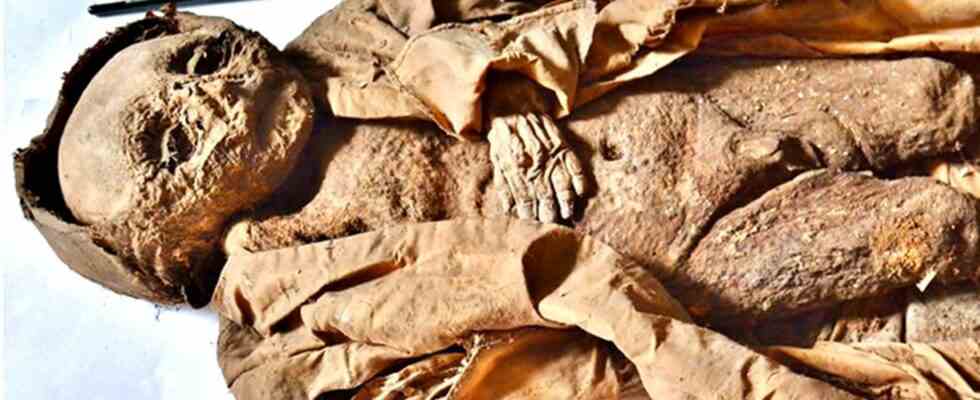Fascinating results of an excavation in Austria:
This boy was found mummified in a family crypt in Steyr, Upper Austria, which was reserved for the Count of Starhemberg.
The one or two year old infant was buried there between the mid 16th and 17th centuries.
His body is wrapped in an elaborate silk robe.
Given that the body was buried in a silk burial robe and was the only child in the family tomb, researchers suspect he was a firstborn.
But how did the little boy die?
An autopsy of the body with CT scans shows abnormalities in the ribs.
According to the researchers from the universities of Munich, Salzburg, Linz and Kiel, this is a classic sign of malnutrition, especially vitamin D deficiency.
The scientists also found low levels of vitamin C.
However, fat tissue analysis revealed that the 10- to 18-month-old boy was overweight for his age – especially compared to other toddlers at the time.
As a result, the researchers suspect that the child was well fed.
A look inside the lungs also reveals signs of fatal pneumonia, which can occur in infants with vitamin D deficiency.
So what exactly was the cause of death?
“The combination of obesity and severe vitamin deficiency can only be explained by a generally good nutritional status with an almost complete lack of sunlight,” reports pathologist Andreas Nerlich from the University of Munich.
It wasn’t until the 19th century that scientists found out that sun exposure is necessary for bone formation in children.
Many aristocrats in the 16th and 17th centuries avoided the sun to keep their skin white.
That seems to have been the death sentence for the little boy.
“This is just one case, but since we know that early infant mortality rates were generally very high at that time, our observations can have a significant impact on the entire life reconstruction of infants, even in higher social classes,” explains pathologist Andreas Nerlich from the University of Munich.

